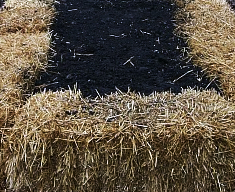It is time to plan, prepare for and plant your spring harvest garden. Yes, I know, it’s January… I already feel behind the times so let’s get started!

Plan Your Spring Harvest Garden
There are 37 kinds of fruit, vegetables and mushroom to utilize when sunlight is increasing, snow, rain and frost is frequent, temperatures are cold or freezing and all manner of weather is thrust upon us. These varieties are:
1. Artichokes (transplant, start in January)
2. Arugula (transplant, start succession planting in late January)
3. Asparagus (direct, perennial, plant crowns in January)
4. Beets (direct, start succession planting in January)
5. Broad Beans (transplant, start succession planting in early January)
6. Broccoli (transplant, start succession planting in early January)
7. Bunching Onion (transplant, start succession planting in early January)
8. Cabbage (transplant, start succession planting in January)
9. Calendula (transplant, start succession planting in late January)
10. Carrots (direct, start succession planting in January)
11. Cauliflower (transplant, start succession planting in early January)
12. Chives (transplant, start succession planting in January)
13. Cilantro (transplant, start succession planting in January)
14. Claytonia (transplant, start succession planting in January)
15. Collards (transplant, start succession planting in January)
16. Currants-Early Varieties (direct, perennial, plant root balls in January)
17. Fennel (transplant, start succession planting in January)
18. Fiddleheads (direct, perennial, sow seeds in January)
19. Gooseberries-Early Varieties (direct, perennial, plant root balls in January)
20. Kale (transplant, start succession planting in early January)
21. Kohlrabi (transplant, start succession planting in January)
22. Lettuce (transplant, start succession planting in January)
23. Mint (transplant, start succession planting in January)
24. Morel Mushrooms (start using an indoor mushroom kit)
25. Mustard Greens (transplant, start succession planting in January)
26. Nettles (transplant, start succession planting in January)
27. Pak Choi (transplant, start succession planting in January)
28. Pansy (transplant, start succession planting in January)
29. Parsley (transplant, start succession planting in January)
30. Peas (transplant, start succession planting in January)
31. Radishes (direct, start succession planting in January)
32. Ramps (transplant, start succession planting in January)
33. Rhubarb (transplant, start seed succession planting in early January)
34. Spinach (transplant, start succession planting in January)
35. Strawberries (direct, perennial, plant root ball/plants in January)
36. Swiss Chard (transplant, start succession planting in January)
37. Turnips (direct, start succession planting in January)
Prepare Your Spring Harvest Garden
Hot Bed Preparation
1. Create Straw Bale Raised Beds: Take (4+) 3-string straw bales, giving you about 2’ Depth, 3 ½’ Width, and as long or short as you wish. You will need at least 4 bales per bed. You may also lay down chicken wire at the bottom of the bed to prevent moles and voles from devouring your garden.
2. Add 6 inches of Fresh Manure: Fill the bed with about 6 inches of fresh manure. The best manure is horse and then cow. If you live in a temperate climate, you may skip #2, the manure fill and instead fill your bed with 1 ½ feet of #3.
3. Add 1 foot of Compost, Straw and Soil: Mix together 2 parts compost, 1 part soil and 1 part straw and fill the bed. This will leave about 6 inches of head space from the soil to the top of the bed. This head space provides insulation and heavy wind protection.
4. Water the soil thoroughly; soak the bed. This will activate the manure to decompose, thus creating heat.
5. Lay out drip hoses down the middle of the bed. Cover the bed with black plastic mulch. Take soil temperatures daily to ensure that your vegetables and fruit seeds can germinate.
6. Cut holes in the black plastic to plant transplants or directly sow seeds in the bed. Plant when appropriate. Dust the exposed plants with diatomaceous earth to prevent slugs and other nasties from eating everything.
7. Cover the bed with frost protection and/or clear plastic sheeting hoop houses.
Plant Your Spring Harvest Garden
Plant in succession means that you plant seeds of each type of vegetable every week according to how much your family will eat in the week it is harvested. How much broccoli do you eat per week in the spring? I always add 10%-25% more as a just-in-case or on contingency.
Direct seed means to plant it directly into the bed.
Transplant means to start the plants indoors and than transplant to the bed. I have found that many vegetables do better if they are started indoors. A few examples are broccoli, cauliflower, cabbage and herbs – to name a few.


[…] Source: Your Spring Harvest Garden – How to Provide […]
LikeLike
Thnaks for the idea of planning ahead. I generally wait way too long. Thanks again.
LikeLiked by 1 person
Any suggestions on growing cilantro inside?
LikeLiked by 1 person
Next to a cool, sunny window! 😉
LikeLike
Pingback: Your Spring Harvest Garden – How to Provide – WORLD ORGANIC NEWS
Great list:)
LikeLiked by 1 person
Thanks for the inspiration! Your post was a good reminder that I need to at least clean up my garden – weeding and mulching before the icy winter arrives here in Georgia. Maybe I’ll try planting broccoli for a spring harvest garden next year.
Denise
LikeLiked by 1 person